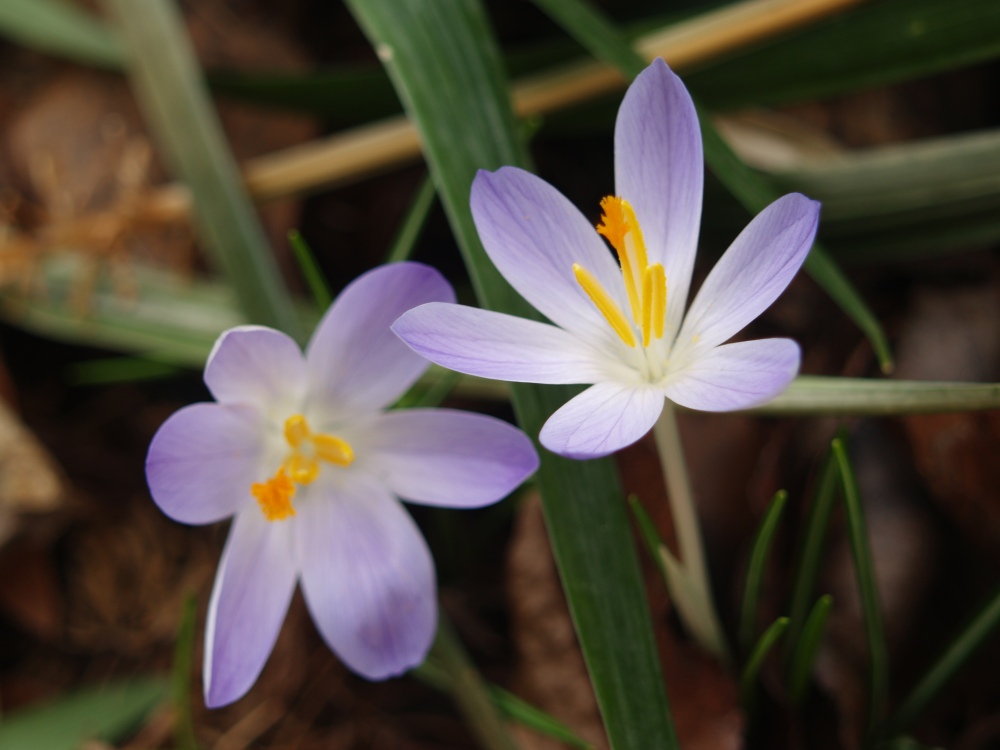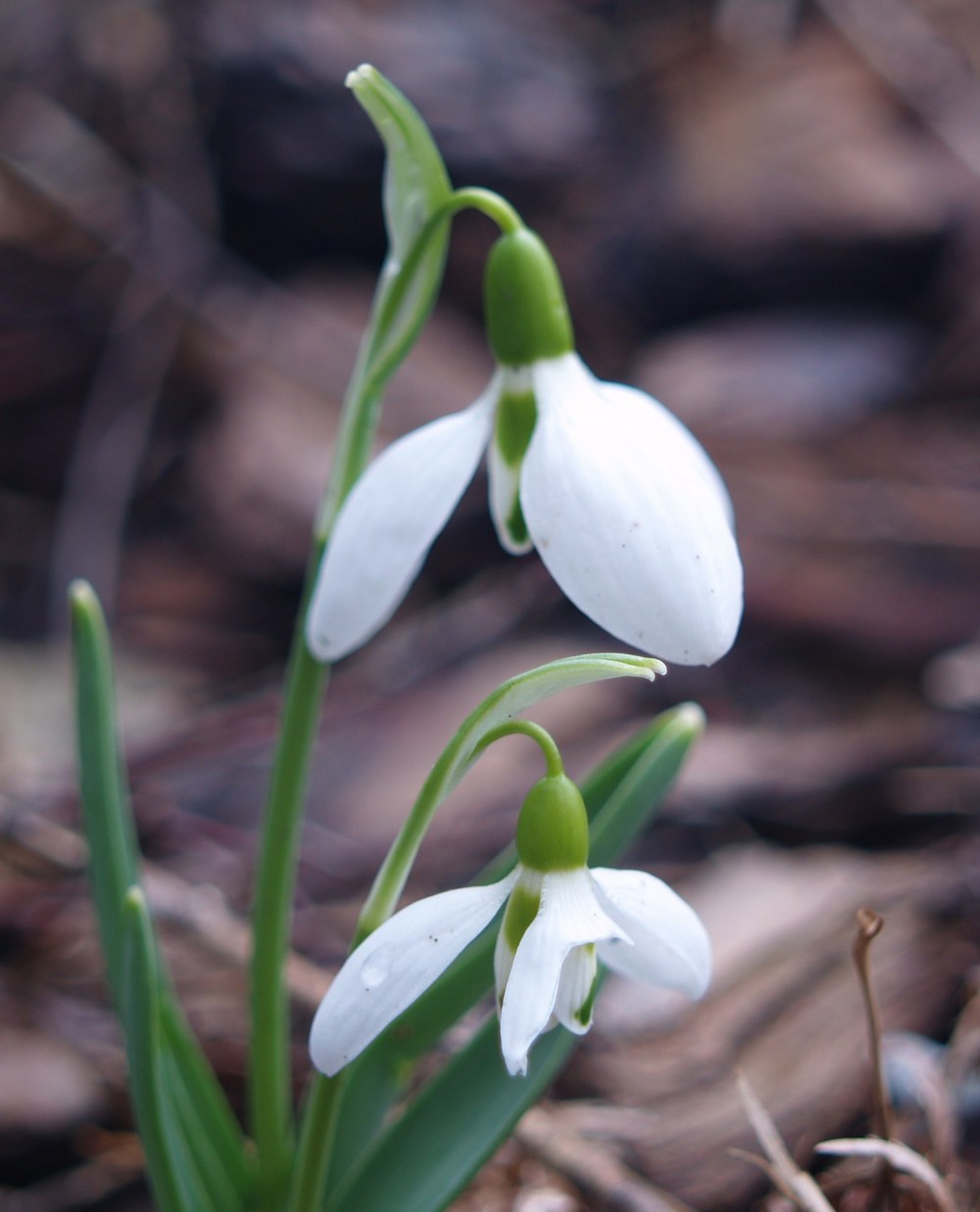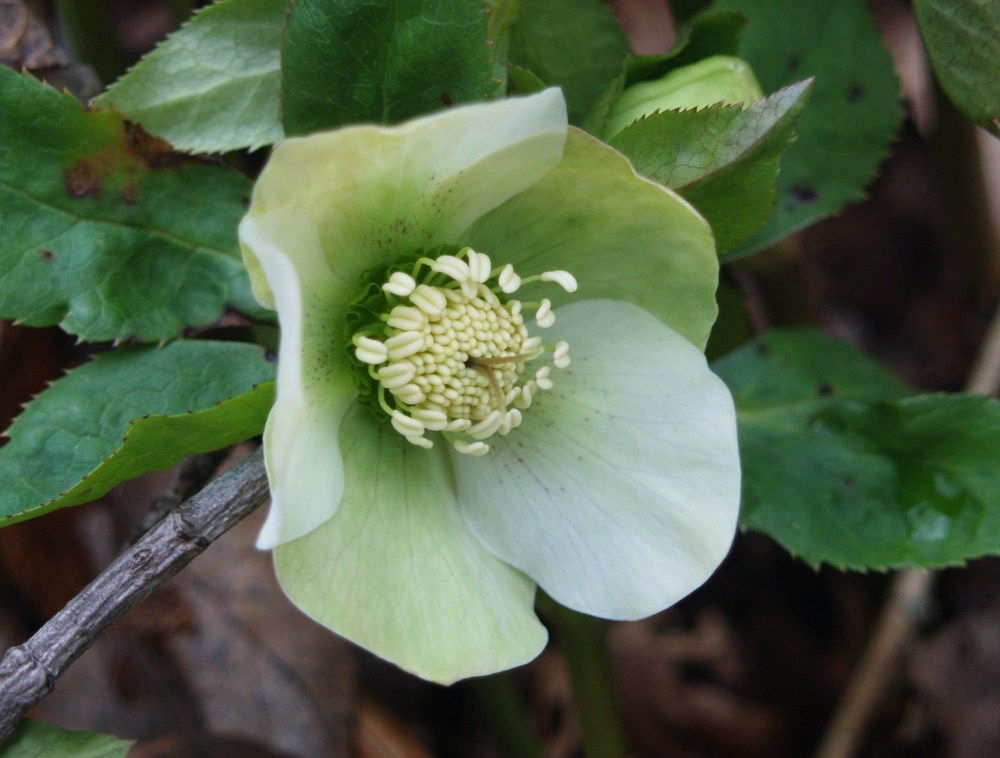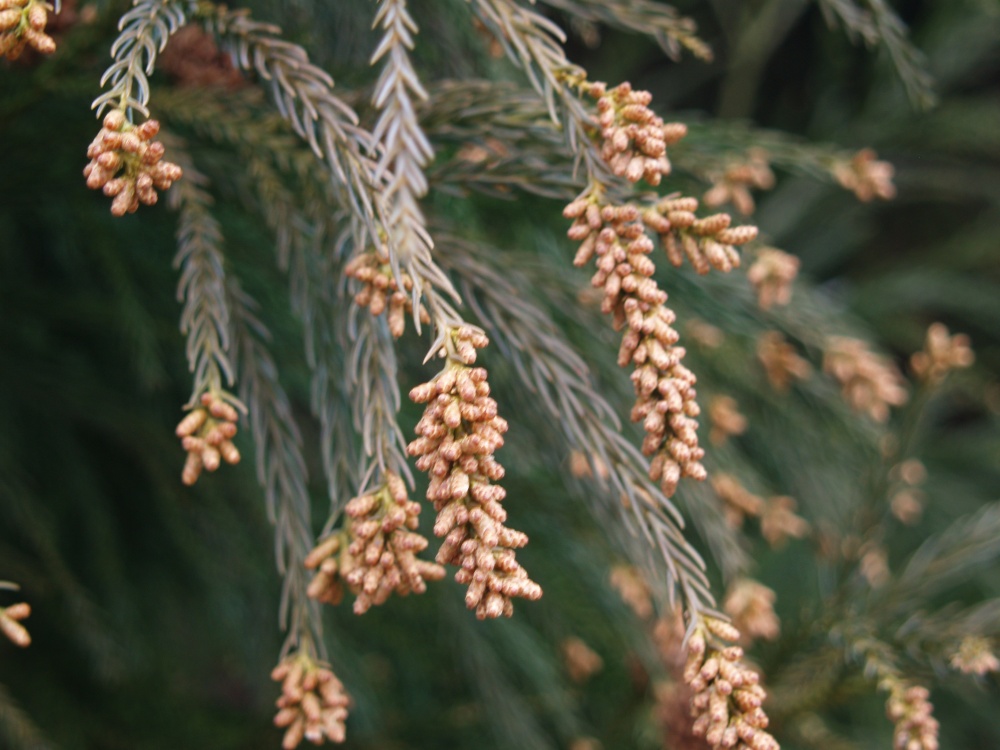I hesitate to offer gardening advice since I follow how-to and when-to instructions so poorly. There are numerous tasks that must be accomplished to keep a garden humming along, but much of what you read and hear is not based in fact, and often is wrong. Not that it matters much.
The week past I was confined dawn to dusk to a cavernous warehouse constructing a display for a local garden show, and so this morning I wandered about, surveying the damage from winter storms that must still be repaired, but also delighting in the crocuses (above) and snowdrops (below) that have tardily emerged. Along the wooded border of the garden are numerous branches that crashed to the ground under the weight of wet snow several weeks back, but remarkably managed to avoid squashing oakleaf hydrangeas, aucubas, and mahonias that are scattered about at the forest’s edge.
The pile of limbs will be enormous once I summon the energy to begin gathering them, and some must be sawn to be moved. I suppose that I will cut them to lengths to fit the firepit that is used too infrequently. There is no hurry, there will be warm days in March when the cleanup will be more pleasant. Beyond tree limbs, there is the usual debris that must be picked up and pruned at the start of every spring season, and despite the nagging reminders of organized gardeners there is no benefit to rushing about.
I set a goal to finish the garden’s cleanup by the start of April, though I often find that I will stray a few weeks into the month, and if I am particularly lazy there might be a chore or two that remains into early May, though rarely are they delayed for more than another week or two.
The overwintered foliage on the hellebores is rattier (if there is such a word) than usual, and I cannot recall if I cut it back a year ago, so this will be one of the first chores undertaken. The new leaves come up with the blooms (above), and the plant has a much neater appearance if the old foliage is cut back. I can hear you thinking that I should not be too concerned with the neatness of the hellebores in the midst of the rubble, but one has to begin somewhere, so why not with the hellebores?
Through the late autumn and into the winter I have gone on far too long (I am sure) about ‘Winter Sun’ mahonia (above), with cheerful yellow blooms that have persisted by some odd circumstance through January and February. Two plants along the shady southern border narrowly escaped catastrophe as maple limbs as thick as my leg dropped within inches. As I stumbled over the debris I noticed new blooms, and since the start of March is tomorrow I will brazenly predict that the mahonias will flower into their fifth month.
Though the rain was slight overnight the lawn through the rear garden was quite muddy, and as I squished about I noted the breeze picking up and dark clouds approaching rapidly from the northwest. As I neared the back of the property a brown cloud swept past, not from the oncoming storm, but a wave of pollen from the tall Japanese cedars. The three ‘Yoshino’ cryptomerias (above) suffered a few broken branches in the recent snow, but the two yellow tipped ‘Sekkan Sugi’ were damaged significantly, with tops broken and hanging awkwardly.
I walked briskly to avoid being covered in pollen, and to escape the rapidly approaching storm, which by this time announced itself with rumbles of thunder. I noted the scent of ‘Arnold’s Promise’ witch hazel (above) as I scurried past, and I made my way back to the house with a few moments to spare before the rains began. No work has been accomplished today, but I have noted a few tasks that will take precedence to be done in the next week, or perhaps in the few weeks following.
across the 3 witchhazels I have I think I only have maybe a dozen blooms this year. The deer browsed them very heavily this winter, and one has a pretty good rub on it as well.
I have not experienced deer problems with my witch hazels, though Arnold’s Promise has grown beyond their reach. The rust red blooms of Diane disappeared in the past week, so it’s possible that deer nibbled them since the shrubs are considerably smaller.
I don’t spray the witch hazels with deer repellent at any time of the year, and didn’t consider that a winter spray would be needed for the bare stems, but I’m not surprised, the list of resistant plants is smaller every year. I highly recommend that you spray a repellent, and though this would not prevent rubbing it will help protect blooms and foliage.
You mentioned losing the tops of your evergreen. We lost the top 3rd of a 15 foot pine. The base is probably 6 inches or so in diameter — not a particularly wide tree, but used to be gracefully beautiful. I have no idea what we should do with it – should we try to keep it or take it down and plant another tree in it’s place?
Pines can be particularly troublesome when the central leader (the trunk) breaks, especially the common white pine (Pinus strobus) that is popular for its long, finely textured blue-green needles. Many pines, including white pine, do not form lateral growth buds, so that when a branch or trunk breaks (or is pruned) it will die back to the next branch. Trees with lateral buds will sprout new growth from just below the injury, but many pines will not, so it will take much longer for the tree to develop a new central leader. Eventually another branch will develop a more upright form and become a central leader, but for several years the tree will look “flat topped”. I have become resigned that magnolias and cryptomerias in my garden will be oddly shaped for a few years, but they are towards the rear of the garden and I could be convinced otherwise if they were more prominent.
Don’t despair about your mahonia. There’s hope if it ever becomes damaged. While your mahonia escaped annihilation this year, I must share with you the delightful surprise about mine that’s been evolving for nearly 5 years now. In March 2007 when I bought my neglected farmette, I had a leatherleaf mahonia that had three trunks that looked like an alien formation, much like a palm tree… No lower leaves or branches, just three huge skinny trunks with spits of greenery at the top. As it was overgrown, my late brother Mike and I decided to level it to the ground with the chainsaw and remove the trunk & roots later. Much to our surprise, the mahonia started to grow in a spiral growth pattern from the flattened trunk, is now a lovely dense columnar bush that likely will grow into a beautiful tall columnar formation. Amazing how plants can come back in totally different incarnations with a little benign neglect.
Best wishes to you.
A few of the uppermost branches of the Winter Sun mahonias have browned in the winter chill, but they will be fine. A few years ago an autumn planted mahonia browned almost completely so that I cut it just above ground level. It rejuvenated quickly and though it didn’t bloom that year, it has now completely recovered. These are tough plants, and I don’t fret about a bit of winter injury.